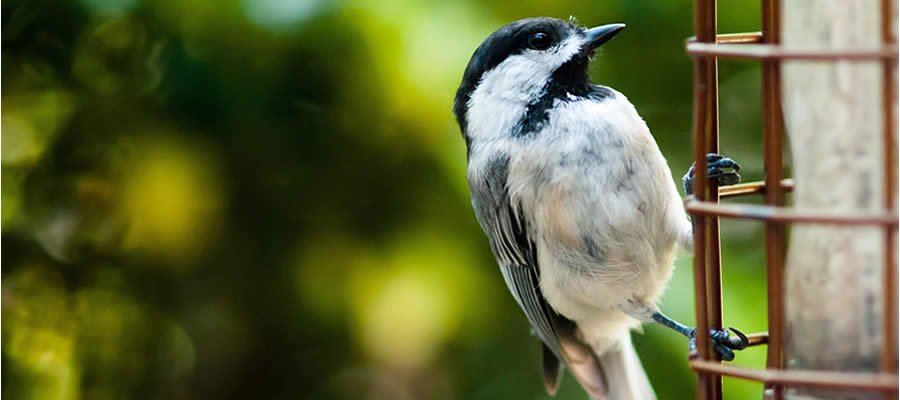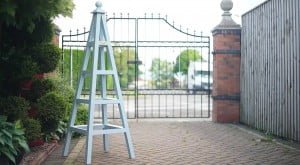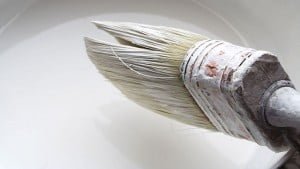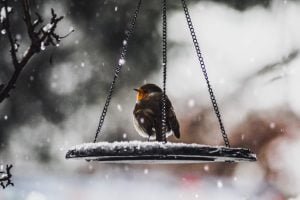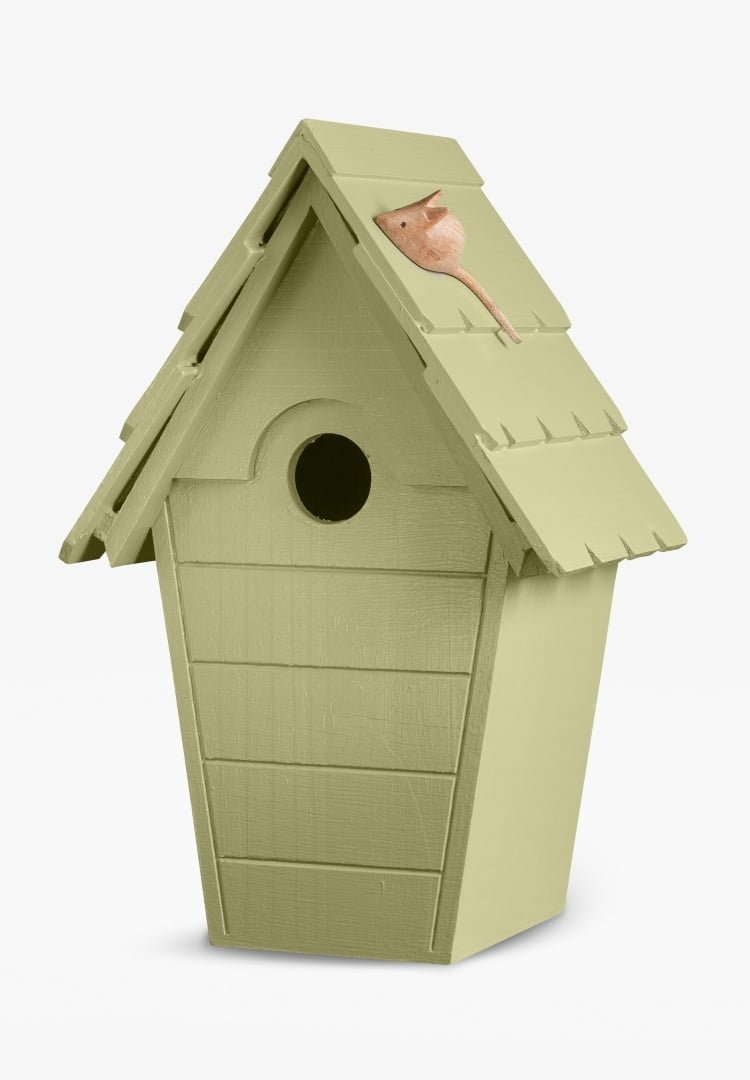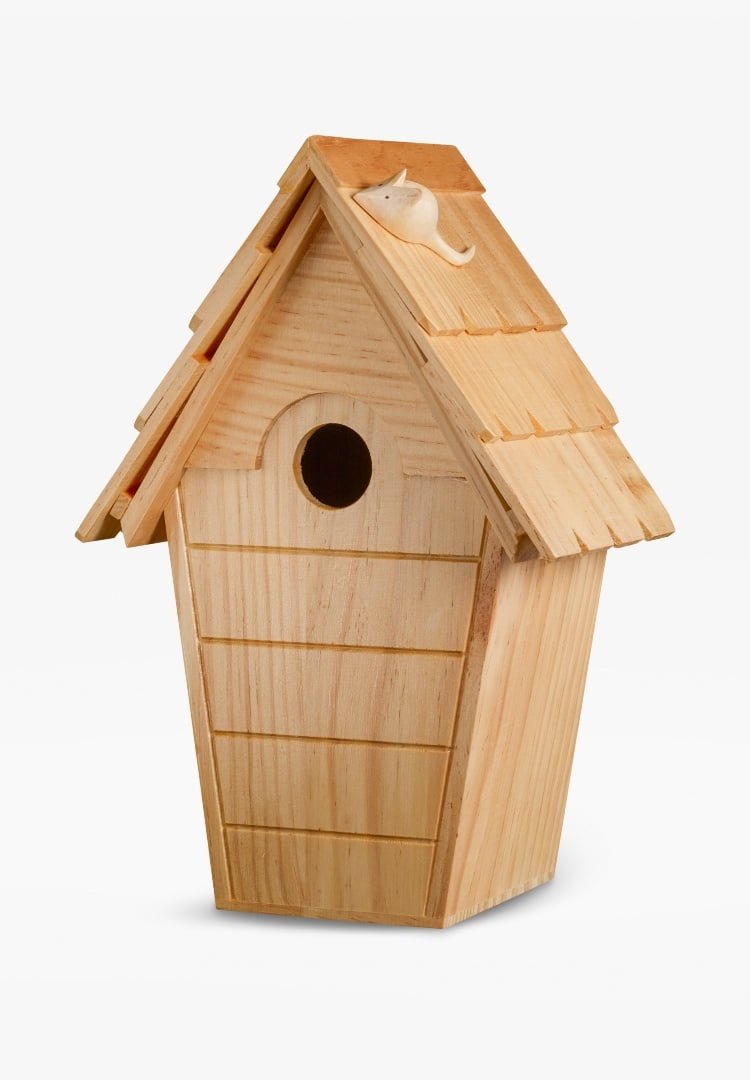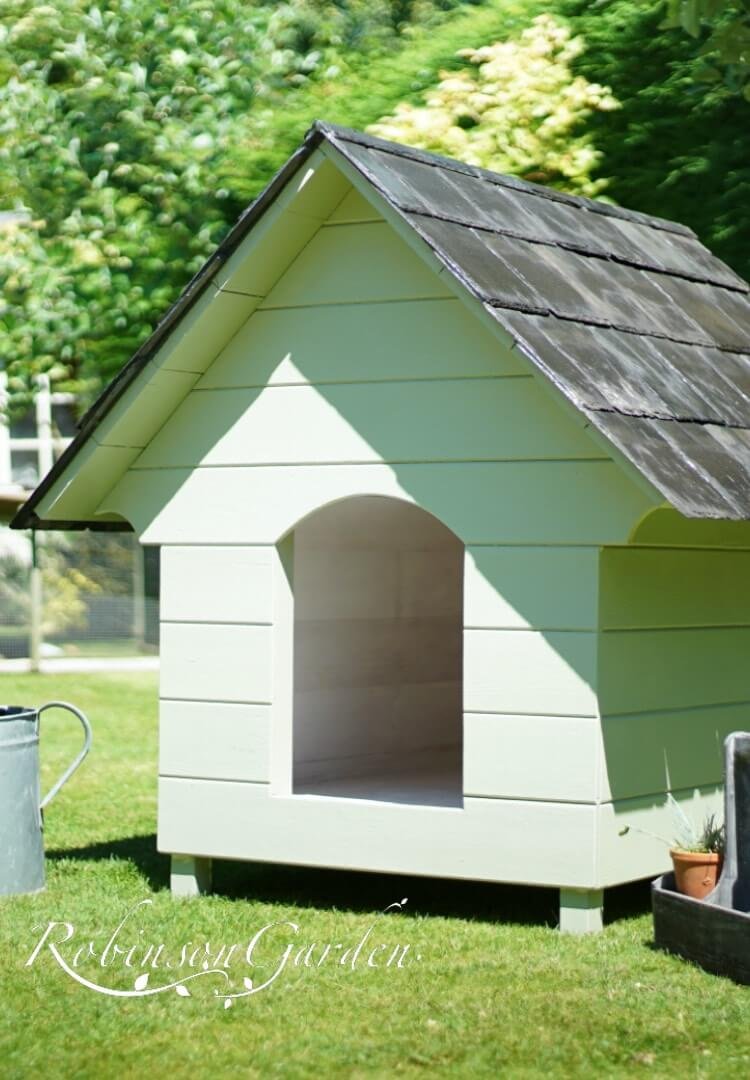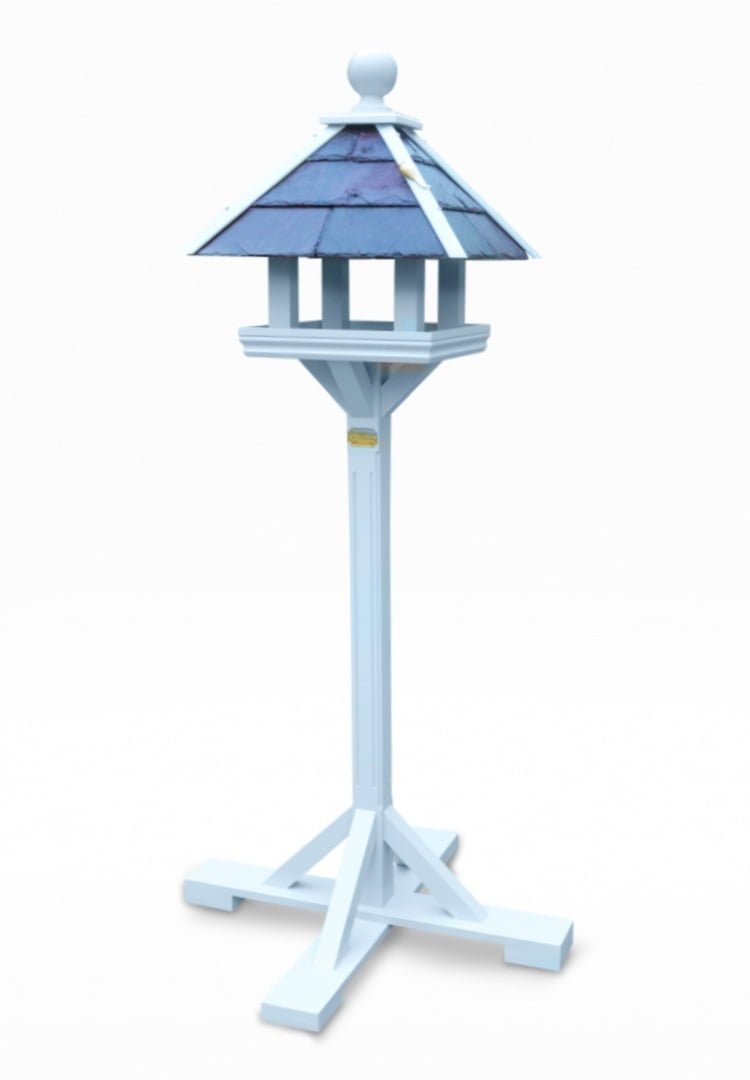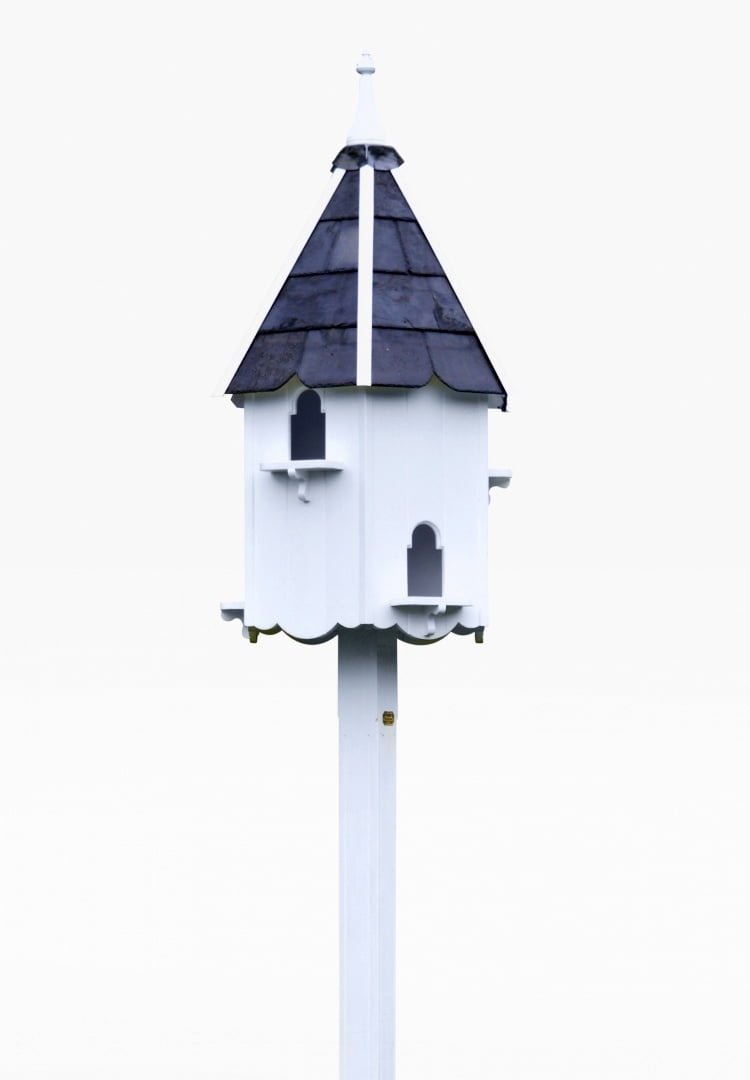This may sound like an easy question when it comes to feeding the local bird wildlife. However, if you would like to attract a wide range of birds or a particular bird variety, it may help by reading this post.
Birds that visit your garden have particular feeding preferences ranging from ground feeders to seed feeders. Ensure the best chance of having these visit your garden by having multiple feeding sites.
Some types of birds are particularly shy and prefer to stay in or close to cover. Others are happy to come out into the open space and collect their food.
By visiting a local garden centre, large supermarkets or a variety of websites such as RSBP, there are many styles and designs of feeders to choose from.
Bird Feeder FAQs
What type of bird feeders attracts the most birds? This is a question that many people ask and it depends on your situation. If you have a large backyard with many trees, then you should look into getting a hopper or tray style bird feeder. These types of feeders are great for attracting larger birds like cardinals, bluejays and woodpeckers and also smaller birds such as goldfinches, bluetits and great tits.
If you live in an area where squirrels are a problem, then you should check out the squirrel proof feeders. These types of feeders have been designed to keep out pesky squirrels so that they cannot eat all your bird seed!
Another important thing to consider when choosing which type of feeder to buy is how easy it will be for you to clean it each week. The easier it is for you to clean it, the less likely it is that mold or mildew will grow on the inside surface of the feeder.
There are many different types of bird feeders available, but only a few that actually work. The best type of bird feeder to buy will depend on what you’re looking for.
Window feeders are usually made from wood or metal and come in a variety of styles. They can be hung inside or outside the house, depending on where you want to put them. Some window feeders have built-in perches and others have platforms that the birds can stand on while they eat.
2. Hopper Feeder
Hopper feeders are usually made of plastic and are designed to hold large amounts of seed at once. They come in many different shapes and sizes so you can choose one that fits your needs. Some hopper feeders even include feeding ports so that multiple birds can eat at once without fighting over food!
3. Tube Feeder
Tube feeders are great because they allow small birds like finches and chickadees easy access to food without having to fight with larger birds like cardinals or blue jays for their share of seeds! Tube feeders can be mounted on walls or trees or hung from hooks inside your home if you want them.
4. Platform feeder
Platform Bird Feeders offer the most versatility in terms of the types of wild birds that will visit your backyard. They come in many styles and sizes so that you can choose one that matches your yard and tastes.
The most common type is a platform feeder with perches for multiple birds at once. These typically hang from a tree branch or other fixed object in your garden, although some models also sit on the ground for easy access by smaller birds.
The best bird feeders for winter are ones that have a seed guard on them, so that the birds can get to the seeds and they won’t be blown away by the wind. If you have an open feeder it is best to put some kind of cover over it like a mesh or plastic mesh bag.
This will keep the seeds dry and available for the birds to eat. The other thing is if you have a large group of birds feeding at once, make sure that you have enough food so that all of them get enough food to eat.
There are many different styles of bird feeders, but how do you choose the right one?
The best bird feeder is the one that will attract the most birds and keep them coming back. There are a number of factors to consider when choosing a bird feeder. They include:
- Type of Food Available
- Size of Feeder and Capacity
- Where You Plan to Hang It
- Cost
There are so many different types of bird feeders and seed mixes available. If you’re a keen bird watcher, then you’re probably already familiar with the different types of feeders available. But if you’re new to feeding wild birds, then this guide should help you decide which type of bird feeder would be best for your garden.
Which bird feeder attracts the most birds in the UK?
The answer is…it depends!
If you want to attract a wide variety of species, then a traditional tube feeder is probably the best bet. But if you want to attract just one particular species, then it really depends on what they prefer to eat. For example, nuthatches love peanuts while finches prefer sunflower seeds or millet.
Top 4 Types of Bird Feeders for Wild Garden Birds
There is a wide range of bird feeders and choosing the correct one depends on a wide range of factors; please see some examples below…
Freestanding Bird Feeding Platform / Feeding Station / Bird Table
Bird feeding stations are a common sight in gardens across the U.K. Many people use them to attract birds, while others prefer to keep the birds out of their gardens, but what exactly are bird feeding stations and why should you buy one?
The term ‘bird feeding station’ refers to any structure that you place your bird food on. It can be as simple as a table or bench with a shelf underneath it, which is ideal for hanging up bird feeders and suet balls. Bird feeding stations also come in many different designs and styles – some are designed to look like trees or bushes, while others are made from recycled materials such as wood or metal.
If you want to attract more birds into your garden, then it’s important to provide them with the right food source. Birds like different types of seed, so it’s worth experimenting with different types until you find one that they like best (most birds will eat sunflower seeds).
You should also make sure that there is plenty of water available at all times; this can be achieved by installing a bird bath near to where you hang your feeders and suet balls.
Seed Bird Feeder
One of the most popular types of feeder in the market allows for attracting a wide range of birds, including blue tits, finches and sparrows. They can be purchased with either metal or plastic fittings.
Please be aware that squirrels are prone to damaging plastic fittings, so it may be worth checking to see if you have squirrels in the area you wish to position the feeder before purchasing.
All of the seed feeders can be easily hooked onto the Robinson Garden Bird tables to make it easier than ever to attract a wide range of birds.
Some seed feeders now come with an enclosed feeder guard, which allows the birds to enter easily but prevents predators from easily attacking whilst the birds are feeding. It also prevents larger birds and squirrels from accessing the food.
The seed feeders are suitable for sunflower seeds, sunflower hearts or any other seed mix. If you wish to use nyjer seed, you can purchase special nyjer seed feeders, which have very small holes or slits which help prevent seed from being wasted.
Also, as a way of preventing seeds from being wasted, a seed tray can come in handy and can also provide extra room for birds to perch. It also allows larger birds to get to seeds which may be an advantage or disadvantage.
Mesh Nut and Nibble Bird Feeders
An all-time favourite for blue tits, woodpeckers and other birds that cling. Ensure that the feeder is made from steel mesh to ensure a safe method of offering peanuts to wild birds.
You need to ensure that the mesh is large enough to prevent beak damage and is small enough to prevent large pieces of nut from being removed.
Guidance from a few sources say around 6mm.
Suet Bird Feeders
You can purchase these in various sizes, they are suitable for suet cakes and suet balls. It is recommended to purchase a multi-purpose suet feeder for either balls or cakes.
Never put suet balls out in nylon mesh bags as it can cause damage to birds and in worst case scenarios cause death.
How to Keep Predators away from your Wild Bird Feeders
The UK is home to a wonderfully diverse range of birds and while they can be a joy to watch, not all of them are welcome visitors.
There are many different ways that you can keep predators away from your bird feeders and garden. One of the most effective methods is to use a variety of different techniques in conjunction with each other. This will make it harder for predators to find their way around your garden and make it less likely that they will succeed in catching any birds.
The UK is home to a wealth of bird species, so it’s no surprise that many people want to attract them to their gardens. However, not all birds are welcome. Some can be predators and will attack other birds and animals, including wild birds that visit your garden.
The main predators of wild birds in the UK include:
- Cats
- Squirrels
- Rats and Mice
- Pigeons
- Seagulls
- Magpies
How to keep cats away from bird feeders
Cats are a common pest at bird feeders. They can be aggressive, and some people have reported that cats have injured or killed birds at their feeders.
To keep cats away, you need to set up your bird feeder in an area where they can’t easily access it. If you have a large yard with trees and shrubs, you might be able to put your feeder up high enough that cats can’t reach it. If there’s no way to do that, try putting your feeder in a cage or hanging it on a wire, so it’s less accessible.
You can also try using one of the more aggressive cat deterrents on the market. These products include motion-activated sprinklers, ultrasonic emitters, and pepper spray dispensers that are designed to scare off cats and other unwanted critters from coming near your house or yard.
How to keep Squirrels away from bird feeders
They can visit many of rural and urban gardens and love to forage on garden bird feeders just like birds. However, they can cause damage to bird feeders if you choose the wrong type. If you do have squirrels in your garden its best to purchase metal fitting feeders as squirrels can easily chew through plastic.
All of our bird tables come complete with a top surface table to place food on as well as a hook underneath to attach a bird feeder.
Grey squirrels can be a problem if they visit your garden, as you may know they can do a lot of damage to bird feeders. As well as this they seem to have a very big appetite and can easily eat food and treats you have put out for the birds.
As a guide we would advise that bird feeders should be placed at least 2 metres away from any jumping off point such as a garden fence, wall, shrubs or trees.
How to keep rats and mice away from bird feeders
Mice and rats are very attracted to bird feeders. These rodents cause a lot of damage to the feeders, as well as spread diseases. They can also attack the birds that visit the feeder.
Steps for Keeping Rats and Mice Away from Bird Feeders –
Use Sturdy Perches for Feeders
If you have a large bird feeder, it is better to use more than one perch so that the birds can land easily on it. However, if you have a small one with only one perch, you need to make sure that it is sturdy enough so that it will not break down easily under pressure from the weight of several birds landing at once. A lightweight perch might bend or break when too much weight is put on it so make sure that yours are made with strong material like metal or wood instead of plastic or other flimsy materials that can’t hold weight well enough when under pressure from many birds coming at once.
Keep Birdseed off the Ground as much as possible
If you want to attract a lot of birds without attracting rodents, you should try to keep the birdseed off the ground as much as possible so that mice and rats don’t have easy access to it.
How to keep Seagulls away from bird feeders
Seagulls are a nuisance, but they can be kept away from bird feeders by taking some simple steps.
- Put your feeders out of reach
- Use large hoppers or tubs
- Cover the feeder with netting
- Scare off seagulls with a fake owl
- Use spikes or perches to deter feeding birds

